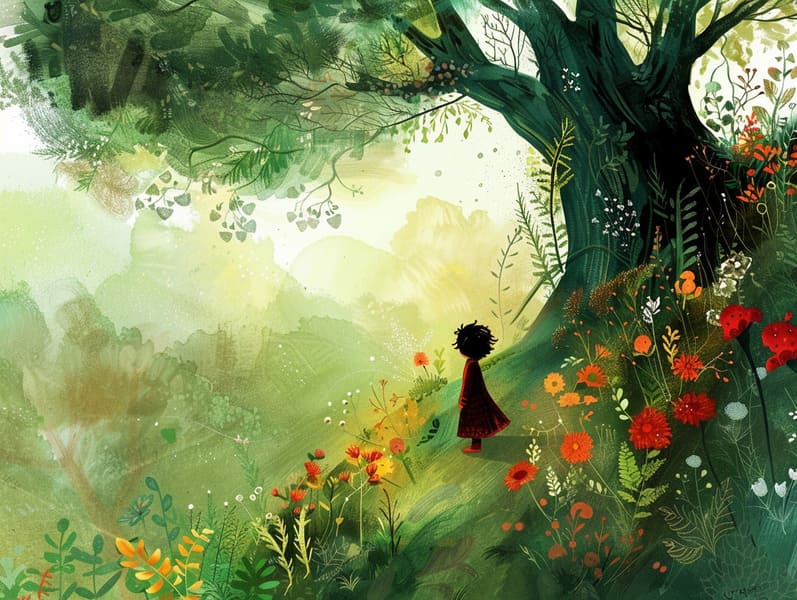A Brief History of Historical Fairy Tales and Their Consistent Mystique.
A Brief History of Historical Fairy Tales and Their Consistent Mystique.
Blog Article

Children's fairy tales have deep roots. These tales have been whispered from one generation to the next long before they were ever put on paper. They developed from a variety of traditions, including Asian traditions. They were initially told among older generations, often carrying themes and messages mirroring the societal norms and beliefs of the time.
The Brothers Grimm, Jacob and Wilhelm, were among the first to compile many of these beloved fairy tales. Their collection, "Grimm's Fairy Tales," included classics like "Cinderella," "The Story of Hansel and Gretel," and "The True Story of Snow White," which have since become pillars in the world of famous fairy tales. Similarly, H. C. Andersen's whimsical tales, such as "The Little Mermaid," and "The Ugly Duckling," have won hearts worldwide, securing their place in the pantheon of timeless fairy tales.
Despite their historical roots, traditional fairy tales remain as meaningful as ever, especially as children's night stories. These magical stories are now available in various formats, including vividly illustrated books, captivating animations, and web-based fairy tales.
Their unwavering allure can be connected to several fascinating points:
Vital Lessons: Old fairy tales often teach important moral lessons. Fairy tales like "The Boy Who Cried Wolf" teach the benefit of honesty, while "The Race of the Tortoise and the Hare" demonstrate the traits of tenacity and meekness. These narratives offer the young clear distinctions between truth and falsehood, building their moral compass in a mild yet lasting way.
Sympathy and Perception: Fairy tales frequently depict individuals facing difficulties and adversities, fostering young listeners to understand with their struggles and celebrate their triumphs. For instance, "The Story of Beauty and the Beast" highlights the importance of seeing inner beauty to acknowledge the real person of a person, building perception and knowledge.
Cultural Perception: Many classic fairy tales are interwoven with the cultural contexts from which they grew. Engaging with these fairy tales can provide intriguing perspectives into different social structures, enhancing a sense of global awareness and acknowledgment.
Fantasy and Innovation: The fantastical elements in classic fairy tales—talking beasts—awaken children’s visions and dreams. These narratives move readers to extraordinary realms, enhancing inventive dreams and a sense of mystery that persists a lifetime.
Timeless fairy tales are not only mesmerizing but also educational. They work as enchanted tools in enhancing various brain and heart skills in young ones. When classic fairy tales are recited, they develop language proficiency by bringing new terms and meanings and sophisticated sentence structures. This practice also enhances listening skills and attention, as children track the narrative, anxious to see what happens next.
Furthermore, contemplating the themes and characters of ancient fairy tales can promote analytical skills and intellectual skills. Little ones learn to identify patterns, foresee events, and catch on to cause and effect. These reflections also benefit children voice their thoughts and feelings, strengthening their emotional intelligence.
In today’s electronic age, the presence of digital storybooks has made these fairy tales more accessible than ever. Internet resources and mobile apps give large libraries of old fairy tales that can be explored or listened through anytime, anywhere. Fairy tales voiced are particularly widespread, making available an captivating way for little ones to appreciate these whimsical stories. Audio stories and narrated videos guide characters and settings to life, often augmented by magical musical scores and tunes that intensify the story journey.
The timeless appeal of ancient fairy tales lies in their ability to modify to new eras while continuing with their fundamental ideas. Contemporary retellings of these fairy tales often incorporate more diverse figures and modern settings, making them understandable to today’s audience. However, the underlying themes of heroism, kindness, and honesty remain unchanged, continuing to strike a chord with young listeners of all ages.
Traditional fairy tales also offer a sense of calm and knowability. They distribute a coherent narrative with a straightforward beginning, middle, and end, often ending with the closure of conflicts and the triumph of goodness over badness. This reliability can be heartening for young ones, granting a sense check it out of consistency in an dynamic world.
Timeless fairy tales continue to captivate and inform new generations, maintaining their delight and value in modern society. As bedtime stories for kids, they put out a perfect blend of fantasy and learning, developing moral values, empathy, and creativity. The availability of online storybooks and the prevalence of fairy tales read out loud promise that these classic tales remain attainable to new generations.
By upholding and making known these fairy tales, we continue to celebrate the rich tapestry of inventiveness and cultural heritage. Whether you are browsing a gorgeously illustrated book, accessing a cyber library, or hearing an sound book, the majesty of classic fairy tales is always within reach. These tales demonstrate of the continued impact of narratives and its ability to link us across epochs and places.
No matter if you are accessing a colorful picture book, accessing a online library, or listening to an audio story, the grandeur of old fairy tales is always within reach.
These tales remind us of the eternal magic of stories and its ability to draw us together across epochs and places, casting a charm that charms and informs alike.